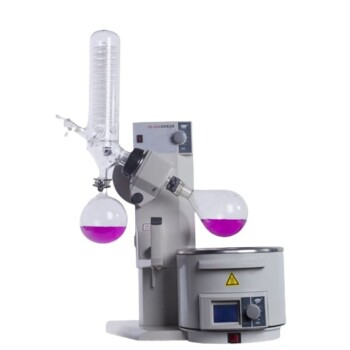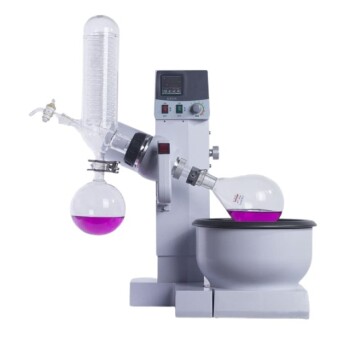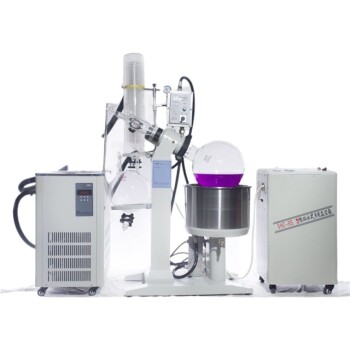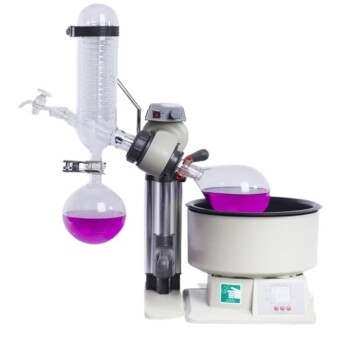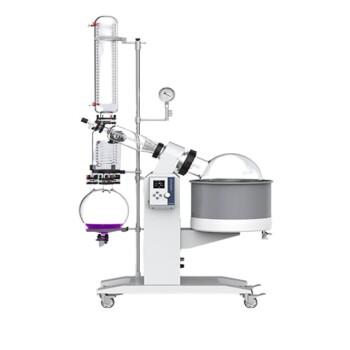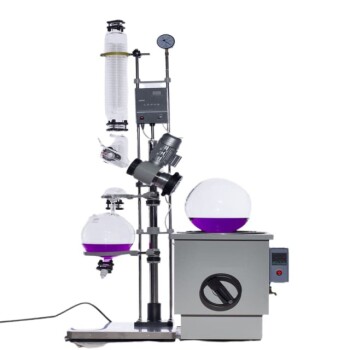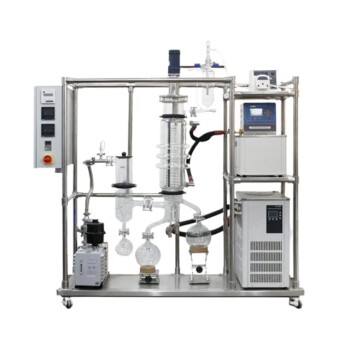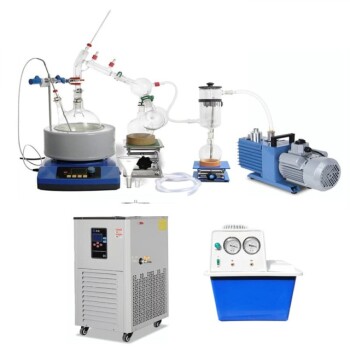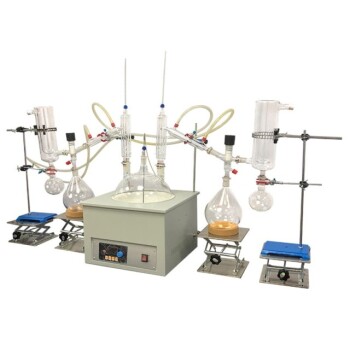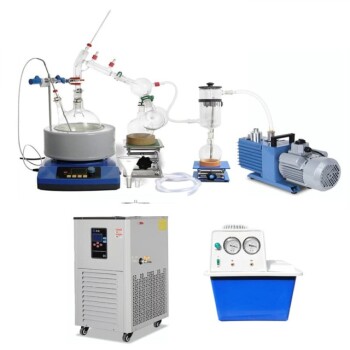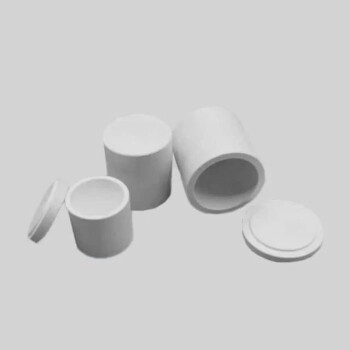Soxhlet extractors and rotary evaporators are essential tools in extraction processes, particularly in research, industrial, and laboratory settings. Soxhlet extraction is primarily used for extracting lipids and other compounds from solid samples through continuous solvent cycling, making it ideal for heat-sensitive substances. Rotary evaporators, on the other hand, excel in solvent removal, especially for low-boiling-point solvents, by reducing pressure and increasing surface area through rotation. Together, these tools offer efficient, versatile, and time-saving methods for extraction and concentration, making them indispensable in fields like chemistry, biochemistry, cosmetics, and food science.
Key Points Explained:

1. Soxhlet Extraction:
- Purpose: Soxhlet extraction is designed for extracting compounds, such as lipids, from solid materials. It is particularly effective for heat-sensitive substances.
- Process: The method involves continuous cycling of a solvent through the sample material. The solvent dissolves the desired compounds, which are then collected in a separate chamber.
- Applications: Widely used in research and industry for lipid extraction due to its efficiency and ability to handle large sample volumes.
-
Advantages:
- Continuous extraction ensures thorough extraction of compounds.
- Suitable for heat-sensitive materials as it operates at relatively low temperatures.
- Versatile and applicable in fields like food science, pharmaceuticals, and environmental analysis.
2. Rotary Evaporator (Rotovap):
- Purpose: Rotary evaporators are primarily used for solvent removal, especially for low-boiling-point solvents. They are efficient tools for concentrating samples.
- Process: The rotovap works by reducing the pressure to lower the solvent's boiling point, rotating the flask to increase the surface area, and applying gentle heat to evaporate the solvent.
- Applications: Commonly used in organic laboratories for tasks like solvent removal, concentration of samples, and purification of compounds.
-
Advantages:
- High speed and efficiency in solvent removal.
- Prevents bumping (violent boiling) due to the rotation and vacuum.
- Suitable for processing large quantities of solvents quickly.
- Versatile and used in various fields, including chemistry, biochemistry, and cosmetics.
3. Combined Use of Soxhlet and Rotary Evaporator:
- Synergy: Using a rotary evaporator in conjunction with Soxhlet extraction enhances the overall efficiency of the process.
- Process: After Soxhlet extraction, the collected solvent containing the extracted compounds can be transferred to the rotary evaporator for concentration. The rotovap removes the solvent under vacuum, leaving behind the concentrated extract.
-
Advantages:
- Speeds up the extraction and concentration process compared to traditional methods.
- Allows for the use of the same glassware for both extraction and concentration, reducing setup time and improving workflow efficiency.
- Enhances the recovery of heat-sensitive compounds by operating under reduced pressure and lower temperatures.
4. Applications in Various Fields:
- Chemical and Biochemical Research: Both Soxhlet extractors and rotary evaporators are indispensable in laboratories for extracting and purifying compounds, especially in organic synthesis and natural product isolation.
- Industrial Applications: Used in industries such as cosmetics, perfumes, and food processing for extracting essential oils, flavors, and other valuable compounds.
- Environmental Analysis: Employed in the extraction and concentration of pollutants or contaminants from environmental samples.
- Daily Life: These tools are also used in the production of everyday products like essential oils, herbal extracts, and food additives.
5. Advantages of Using Rotary Evaporators in Extraction:
- Efficiency: Rotary evaporators can process large volumes of solvents quickly, making them ideal for high-throughput laboratories.
- Versatility: They can handle a wide range of solvents and are compatible with various sample types.
- Safety: The reduced pressure and controlled heating minimize the risk of overheating or solvent degradation, ensuring the integrity of heat-sensitive compounds.
- Cost-Effectiveness: By speeding up the extraction and concentration process, rotovaps reduce labor and operational costs.
6. Considerations for Equipment Selection:
- Sample Type: Choose the appropriate extraction method based on the sample's physical state (solid or liquid) and the compounds of interest.
- Solvent Properties: Consider the boiling point and volatility of the solvent when selecting between Soxhlet extraction and rotary evaporation.
- Scale of Operation: For large-scale industrial applications, rotary evaporators may be more suitable due to their ability to handle larger volumes efficiently.
- Budget and Space: Evaluate the cost and space requirements of the equipment, especially in smaller laboratories or startups.
In summary, Soxhlet extractors and rotary evaporators are complementary tools that enhance the efficiency and versatility of extraction processes. Their combined use offers a streamlined approach to extracting and concentrating compounds, making them invaluable in both research and industrial applications.
Summary Table:
| Tool | Purpose | Key Advantages |
|---|---|---|
| Soxhlet Extractor | Extracts compounds (e.g., lipids) from solid samples using solvent cycling. | - Continuous extraction for thorough results. - Ideal for heat-sensitive materials. - Versatile. |
| Rotary Evaporator | Removes solvents, especially low-boiling-point ones, for sample concentration. | - High efficiency and speed. - Prevents bumping. - Safe for heat-sensitive compounds. - Cost-effective. |
| Combined Use | Enhances extraction and concentration processes. | - Faster workflow. - Reduces setup time. - Improves recovery of sensitive compounds. |
Optimize your extraction process with the right tools—contact us today to learn more!
